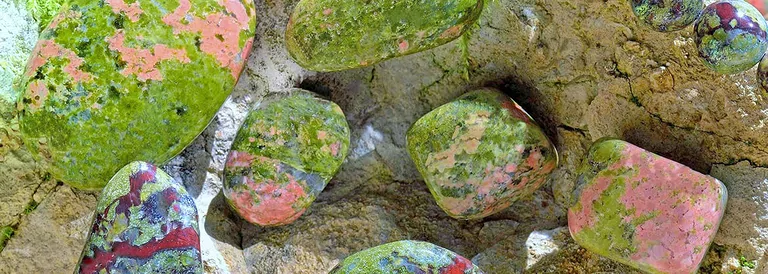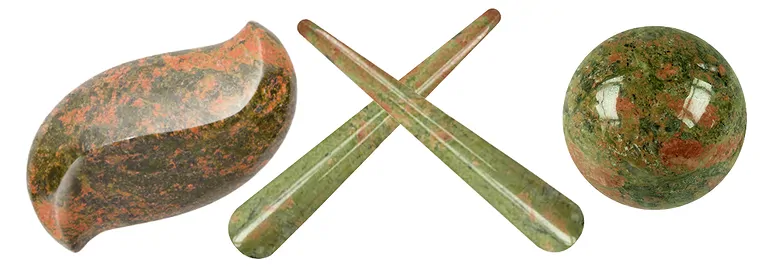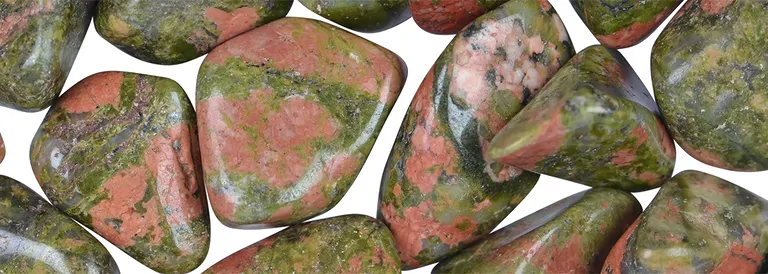
Epidote - Meaning, effect and applications
As a classic stone for regeneration, the Epidote supports us at this time of year to refill energy reserves. The stone conveys patience - both with our fellow men and with ourselves, if not everything goes as planned at the beginning of the year. In particular, the Unakite helps to overcome failures and good cheer to take a new start.
Epidote was identified as an independent mineral only at the beginning of the 19th century and described by the French crystallographer Rene-Just Hauy. Hauy also gave the mineral its name, which is still in use today: Epidote. Mixed with pinkish-salmon Feldspar, Epidote forms a very well-known rock that is called Unakite in both wholesale and retail trade. Most of the goods made of Epidote are made of Unakite, because this rock occurs in larger pieces and so it is possible to cut Large Palmstones and hearts, for example. A well-known variety of Epidote is also the pink piemontite colored by manganese.

In the Edelstein Balance, the wellness concept of Monika Grundmann, the Epidote is mainly used for regeneration after prolonged stress. Unakite is also represented in the stone beings in the medicine wheel; here the affirmation "I feel the sensual powers within me and know that I am perfect is assigned to the stone.
Origine of the Names Unakite and Epidote
It is common among scientists to name minerals and stones according to where they were first found, their properties or chemical composition. Thus Unakite was named after the Unaka Mountains in North Carolina/USA. Further places of discovery of the stone are in South Africa, Norway, California / USA and Zimbabwe. Unakite is formed deep in the earth by the transformation of Granite. Mineralogists call this process epidote formation, which means that minerals in the original Granite are replaced by the Epidote. This further means that the red Feldspar and gray Quartz in the Unakite were also part of the original Granite.

Mineralogical profile Epidote
Chemical Formula: Ca2(Fe,Al)Al2[O/OH/SiO4/Si2O7]
Mineral Class: Group silicate
Evolution: mostly metamorphic by transformation of other silicates, beautiful crystals also from hydrothermal solutions of metamorphic origin.
Color: olive-green, blackish brown, with colored inclusions
Glossiness: vitreous luster
Crystal system: monoclinic
Moh hardness: 6 to 7
Cleavability: perfect cleavability, conchoidal fracture, splintery
Appearance: areal, acicular to columnar crystals, coarse, mixed with red feldspar as Unakite in trade
Use: Epidote is processed mainly as a mixture with red Feldspar (Unakite) for jewelry purposes.
In astrology it represents the regenerative ability of the Scorpio-born.